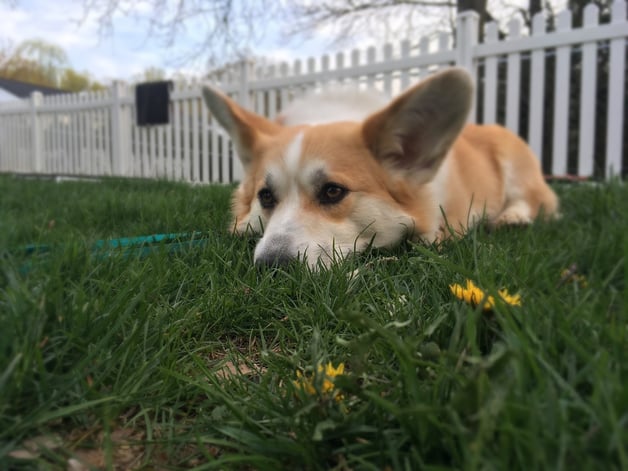Americans love their dogs, no doubt. According to statistics from the American Pet Products Association, there are currently are 89.7 million dogs in the USA, kept by 60.2 million households. Many are beloved family members, and their owners want them to be safe and comfortable, indoors and out.
One way to let your dog experience the joy of the great outdoors, is, of course, to fence your yard. Homeowners fence their yards for many reasons, but a big one is because they have pets who want to be outside, with all the exciting dog-adventure that entails.
There are drawbacks and advantages to all kinds of fences. The most obvious benefit of a fence is containment. You want your dog to be safe inside the yard, and the freedom to run off-leash without worrying they might escape. You also want to keep other dogs (and other animals generally) out of your yard for the safety of your pets.
Height Choices
Height is an important consideration when you are choosing the ideal fence for your dog. Is your dog a jumper? Are they agile and adventurous? There are dogs who will jump a four-foot fence without much difficulty. If your dog is a jumper, a six-foot fence is your best bet.
Even dogs who can’t clear a fence on their own will absolutely be able to jump a fence with assistance. If you have anything near the fence that your dog can use as a launching pad, consider moving it to another part of the yard or getting rid of it altogether.
Another way to prevent jumping is to plant bushes against the fence to keep your dog from a clear running path to clear the fence.
Digging and Escaping
If your dog can’t go over, will she go under? Many dogs love to dig, so choose a fence style that can be buried and make sure your fence installer knows to bury it if you have a determined digger.
For small dogs, aluminum fences offer options like short pickets to help keep them from slipping through a gap. You can also choose a yard fence with closely-spaced pickets to help keep your dog from sliding out, Houdini-style.
Gates are one of the main ways that a fence can be breached, so make sure your gate is in good working order, your gate hardware is fastened correctly, and the gate securely closes and latches.
Some dogs are very responsive to or agitated by people or other animals passing their yard. Even if your dog knows they can’t escape, an open fence will give them plenty of opportunities for barking and agitation if neighbors and their pets regularly pass by. If your dog is easily riled up, a privacy fence that hides these provocations is one way to minimize barking.
There is no one-size fits all fence solution. You need to know your dog’s personality, temperament, and activity level before you spend the money on a fence. You also need to evaluate how much maintenance you want to do and the budget you have. Chain-link is probably the cheapest fencing material, and wood second to least expensive. But chain-link can rust and wood needs to be painted or maintained so it won’t rot. If you’re looking for low-maintenance, vinyl or powder-coated aluminum is probably a better bet.
Once you have evaluated your dog’s personality and balanced your costs and maintenance needs, the right fence can make your outdoor living space the perfect place for your dog (and you!) to enjoy.

